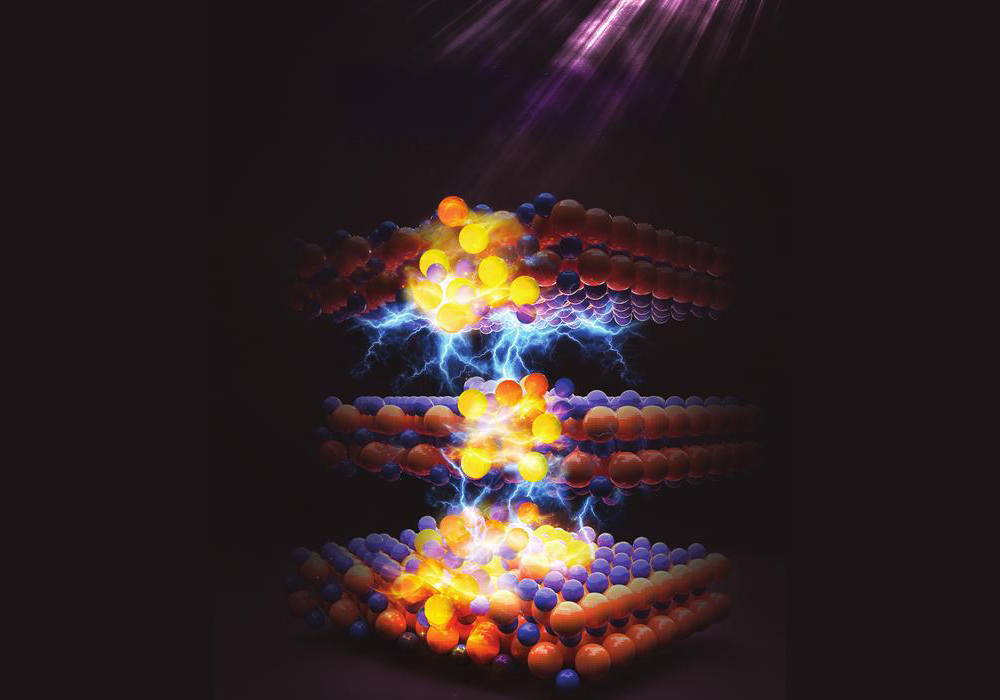
[Image above] From left to right: Apple’s 5W iPhone charger (for scale), Anker’s 30W PowerPort Atom PD 1, and RavPower’s 45W GaN charger. Credit: Amelia Holowaty Krales, The Verge
When I had my new bed frame delivered the other weekend, I made sure to position the frame several inches away from the wall. It wasn’t because I worried about bedbugs—I was worried about fitting my laptop charger into the outlet.
Anyone with an electronic device understands the challenge of finding a wall charger that is both powerful and small. Generally, small wall chargers only pump out 5–10 watts. Buy a wall charger that puts out 45 watts, and now it’s too bulky to fit in a tiny space.
This size versus power conundrum comes from the fact that almost all electronic devices rely on silicon. Silicon makes up the semiconductor chips and transistors that are the heart of modern electronics. Though silicon serves its purpose well, we have just about reached the physical limit of how small silicon electronics can shrink—and so we’re stuck with wall chargers as big as bricks.
Of course, we are only stuck if we keep using silicon.
In this week’s video, science reporter Angela Chen and video director Cory Zapatka from The Verge take an in-depth look at gallium nitride (GaN), a contender on the list of materials that could replace silicon. They specifically focus on use of GaN in wall chargers because of a recent article published on The Verge website that looks at two new GaN chargers offered by electronic companies Anker and RavPower.

Why use a brick-size charger when you can get the same power from a much smaller device? Credit: Verge Science, YouTube
“GaN could pave the way for a whole new generation of miniaturized tech,” Chen says in the video. She and Zapatka provide a large-picture overview of what GaN could mean for the electronics industry but leave specific science details to Martin Kuball, professor of physics at University of Bristol in the United Kingdom and an expert on GaN.
“[With GaN], you lose maybe only 1 percent of the energy you’re basically trying to convert, whereas if you take a silicon device you lose 3 percent,” Kuball says. While this might not seem like a big difference, it adds up when you implement GaN on a system-wide scale. “If you build a whole system using gallium nitride, it is actually much, much cheaper than using silicon—and better performance,” Kuball explains.
However, building a whole system using GaN is not as simple as switching GaN for silicon in existing circuits. “You have to replace or optimize the whole electronics around [the GaN],” Kuball says. Once you do, the whole system will be “much, much cheaper” than a silicon system, but convincing Silicon Valley to invest money in an initially more expensive system when silicon is cheaper right now…well, we will probably see Silicon Valley holding on to their namesake for a while longer.
Of course, GaN is not the only semiconductor that beats silicon in terms of power-to-size ratio. Silicon carbide (SiC) has also received a lot of attention, and the two materials’ relative advantages pair well to replace silicon across a variety of voltage ranges.
I don’t know about you, but I may just order a GaN wall charger for myself. Thinner, lighter, in most cases cheaper—there is a lot to Ga(i)N by making such a switch!

Credit: Verge Science, YouTube
Author
Lisa McDonald
CTT Categories
- Electronics

